|
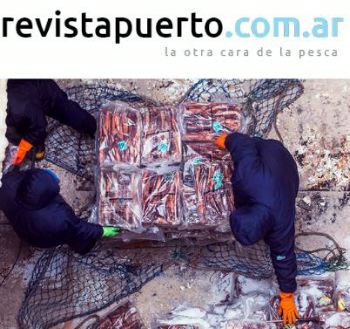
Photo: courtesy Revista puerto
Fish exports and landings for the month of July
 ARGENTINA
ARGENTINA
Tuesday, September 14, 2021, 06:50 (GMT + 9)
Official figures show an increase in catches reaching figures similar to those of 2019 before the pandemic. The export data for the month of July provided by CAPECA indicate that the sector exceeded one billion dollars in sales.
Official data for July show an increase in landings. Shrimp were caught 71% more than in 2020 and more than in 2019. They also show a rise in June exports compared to 2020.
To analyze what happened in the month of July we have taken the data from the Chamber of Freezers since the official data are not yet available; According to this document, the sector has exceeded one billion dollars in exports and there have been some changes in the destination scheme of the main products.
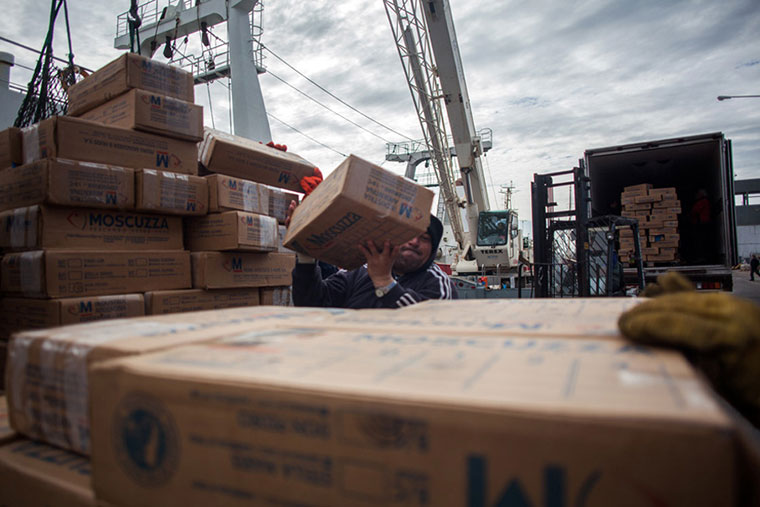
Photo: courtesy Revista Puerto
Total landings as of July 31 registered an increase of 3% compared to the same period last year, with 471 thousand tons unloaded, the figure is close to the catches obtained in 2019.
In the case of shrimp, the increase in landings is enormous compared to 2020, exceeding it by 71%, even when compared to 2019, when the coronavirus pandemic did not complicate the operation of vessels, an increase of 6% is observed .
 For hubbsi hake, catches registered the same volume as in 2020, about 18 thousand tons. Last year, landings had fallen by 44% compared to 2019 and that level of catches has not recovered. With a health situation without major shocks, the explanation can be found in a greater passage of the hake fleet to shrimp. For hubbsi hake, catches registered the same volume as in 2020, about 18 thousand tons. Last year, landings had fallen by 44% compared to 2019 and that level of catches has not recovered. With a health situation without major shocks, the explanation can be found in a greater passage of the hake fleet to shrimp.
Squid was 23% below last year's catches, with 129 thousand tons but 28% higher than in 2019. For kingklip, landings fell by 5.5%, exceeding 2 thousand tons, a figure that exceeds the landings of 2019 by 34%.
Despite the limitations to the capture of the scallop resource (3,500 tons) due to issues related to its sustainability, they increased 22% compared to last year and 54% compared to 2019. In the case of toothfish, with a limited catch remains at more or less similar values, although increasing little by little, year after year: 2,700 tonnes were caught in 2021, 100 more than in 2020 and 500 more than in 2019.
The anchovy did not manage to reach 3,000 tons and the mackerel has only 700 tons unloaded. In the case of croaker, 2021 was the year with the highest catch of the last three with 17 thousand tons, which implies an increase of 11% compared to last year. Crab catches, a fishery that is still being studied, fell by 17%, registering 1,200 tonnes.
In the case of protected species of rays, a 41% reduction is observed after last year and despite the pandemic, catches increased by 14%. The dogfish record practically no catches, but the catfish increased landings by 45% with more than 2,000 tons.
.jpg)
Photo: Courtesy Revista Puerto
In the analysis by type of fleet, the weetfish vessels are the ones that have led the catches with almost 122 thousand tons unloaded and improved their mark of the previous two years. Trawler freezers registered 81 thousand tons, maintaining levels similar to those of 2020 but below 2019, and coastal freezers, with 61 thousand tons, had the lowest record in recent years. The freezer double-rigged trawlers with 44 thousand tons recovered from the resounding fall of last year caused by a union conflict, but they still remained below the 2019 records. In the case of the jiggers, the 114 thousand tons unloaded are lower than the extraordinary volumes that they handled last year, but are in a better situation than two years ago, when they unloaded 84 thousand tons.
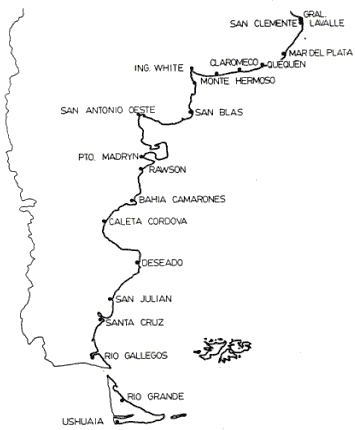 The port of Mar del Plata, despite maintaining its status as leader, has had the worst year since 2019. Even last year, with the pandemic at its worst, it had managed to increase the volume of downloads reaching 236 thousand tons, but this year the figure fell to 194 thousand tons. Puerto Madryn follows in importance, which with 87 thousand tons has improved its participation in recent years and Puerto Deseado, which last year had lost influence and its discharges had fallen considerably, in 2021 it seems to have improved its service since it ranks third place with 52 thousand tons. Below, in order of importance, are the ports of Rawson, Ushuaia, Caleta Paula, Comodoro Rivadavia, Camarones and General Lavalle. The port of Mar del Plata, despite maintaining its status as leader, has had the worst year since 2019. Even last year, with the pandemic at its worst, it had managed to increase the volume of downloads reaching 236 thousand tons, but this year the figure fell to 194 thousand tons. Puerto Madryn follows in importance, which with 87 thousand tons has improved its participation in recent years and Puerto Deseado, which last year had lost influence and its discharges had fallen considerably, in 2021 it seems to have improved its service since it ranks third place with 52 thousand tons. Below, in order of importance, are the ports of Rawson, Ushuaia, Caleta Paula, Comodoro Rivadavia, Camarones and General Lavalle.
Foreign sales
As revealed by the conjuncture report for July, exports compared to June 30 with the same period of 2020 increased by 2.8% in volume when 261 thousand tons were sold and 1.2% in foreign currency, receiving 863 million dollars, but at the same time Taking 2019 as a reference year, it is observed that there was an increase in the volume of exports of 9% and a decrease in collection of 3%, that is, more fish was exported for less money. The figures are similar to the data you collect in your monthly CAPECA report.
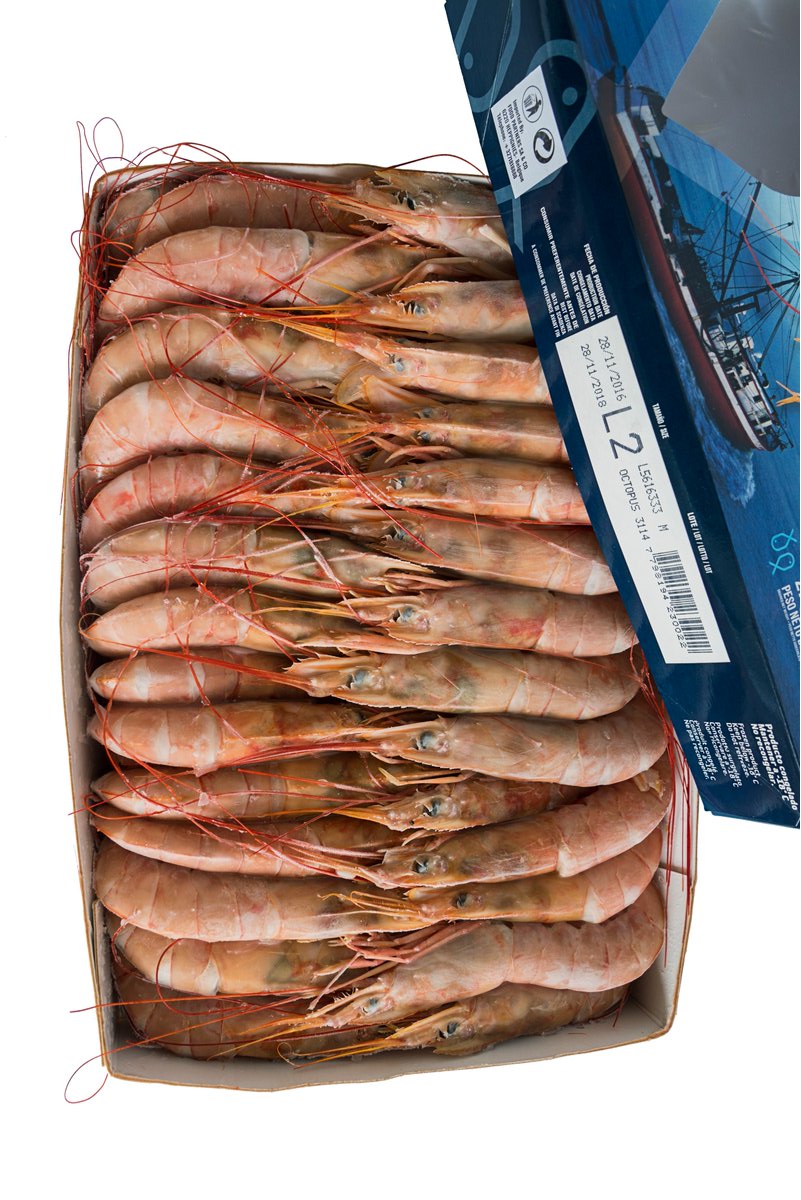 The situation report analyzes the export data after a month overdue and with delay; That is why to analyze sales in July we consulted the data provided by the Chamber of Freezers. It should be noted that some products are not taken by this study, therefore, the total figure usually has differences. In June, for example, 35 thousand tons and almost 10 million dollars were counted. The situation report analyzes the export data after a month overdue and with delay; That is why to analyze sales in July we consulted the data provided by the Chamber of Freezers. It should be noted that some products are not taken by this study, therefore, the total figure usually has differences. In June, for example, 35 thousand tons and almost 10 million dollars were counted.
Photo: courtesy Food Partners Patagonia --->
According to these records, as of July 31, 279 thousand tons have been exported for a value greater than one billion dollars, 1,043,651,500 dollars exactly. The main export destination for fishery products was Asia, followed by Europe, both generating similar foreign exchange earnings, close to 400 million dollars. Behind, with 91 million dollars is North America; and then South America with $ 89 million.
On the Asian continent, China has not been the main buyer but Thailand, which took 27% of total exports. On the European continent, Spain was the main buyer with 22% of the total and on the American continent, the United States with 7% of total sales, leaving Brazil behind with only 5%. The Asian giant, which used to be Argentina's main customer, this year only demanded 9% of total sales.
.jpg) In tons, the product with the highest sales volume was the illex squid with 109 thousand tons, 14% less than in 2020 and at a 23% lower value, which resulted in a collection 35% lower than last year, entering in total 223 million. The median price, which stood at $ 2,681, this year fell to $ 2,047. South Korea was the main buyer and also the one that paid the lowest price; China, which last year had led purchases, this year was in second place and was also one of the least paid, below 2,000 dollars a ton. Sales of this product to Spain fell and increased in the United States. In tons, the product with the highest sales volume was the illex squid with 109 thousand tons, 14% less than in 2020 and at a 23% lower value, which resulted in a collection 35% lower than last year, entering in total 223 million. The median price, which stood at $ 2,681, this year fell to $ 2,047. South Korea was the main buyer and also the one that paid the lowest price; China, which last year had led purchases, this year was in second place and was also one of the least paid, below 2,000 dollars a ton. Sales of this product to Spain fell and increased in the United States.
The second product with the highest sales volume was shrimp, 77 thousand tons that are distributed in 42 thousand tons of whole and 35 thousand tons of tails. Revenues from these sales were $ 535 million, of which $ 283 million came from whole shrimp and $ 252 million from tails. Exports of whole shrimp registered an increase of 137% in volume and 233% in foreign currency, with a price increase of 41%. For the queues, the increase was 14.5% in volume and 13.3% in foreign currency due to a fall in the average price.
The main market for whole shrimp is Spain, which this year has been reactivated after a difficult 2020; When as of July 31 only 7 thousand tons had been exported, this year instead the figure rises to 22 thousand tons and represents 66% of sales to the European continent, the main export destination. Italy was the second largest buyer with just over 6 thousand tons and between the two countries they complete almost all of the sales to the European destination. Japan and Russia were the destinations that followed in importance with almost 5,000 tons the first and just over 2,000 tons the second. The average price was located at 6,783 dollars and it was Italy that paid the best, at a rate of 7,400 dollars per ton, while Spain was located at a lower price with 6,600 dollars per ton.
The shrimp tail market was indisputably the Asian continent, despite the drop in sales to China that went from first to third place in one year, leaving Thailand ahead, which became the main buyer. The sum of the Asian countries took 45% of the total exported and they were the ones that paid the lowest price. While the average value was located at 7,200 dollars, Thailand paid 6,438 dollars, China 6,599 and Vietnam 6,800 dollars.
.jpg)
Photo: Courtesy Revista Puerto
Sales to the European continent represented 27% of the total, with Spain being the main buyer with volumes similar to those required by Thailand, around 5,000 tons. But unlike the Asian market, here the product traded at a better price, close to $ 7,800 in Spain and $ 8,200 in Italy, which was the second largest buyer on this continent.
In the American continent, Peru has been another of the relevant markets, with purchase volumes of 4,600 tons, but at the lowest price in the market, 6,274 dollars per ton. Asian countries, like destinations in Latin America, are markets for the reprocessing of our shrimp. In the United States, on the other hand, where products with greater added value arrive, the values are much higher, at a rate of 9,400 dollars per ton; 3,000 tons were exported there and this places the northern country in fourth place among the main markets, above Peru in foreign exchange, but not in tons.
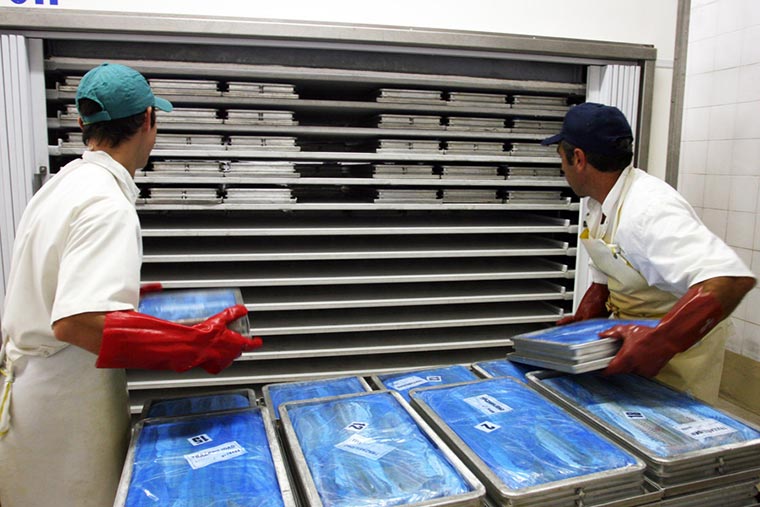
Photo: Courtesy Revista Puerto
Hubbsi hake exports totaled 56 thousand tons in total, 34 thousand corresponding to filet and 22 thousand to presentations that exclude filet, as whole or H&G. In foreign currency, these sales generated 125 million dollars, 94 million corresponding to the filets and 31 million to the other presentations. In the case of filets, sales increased 13% in volume and 11.5% in dollars due to a one and a half point drop in their value; on the other hand, in the other presentations there was an increase of 5.5% in volume and 8.3% in foreign currency, thanks to a rise of almost 3% in price.
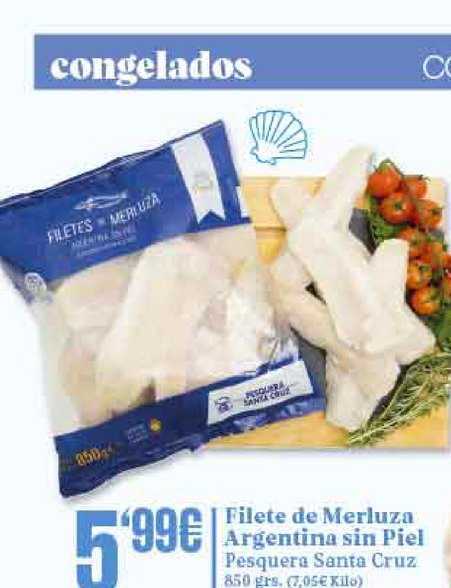 The average price of hubbsi hake filet was $ 2,745 and the main market was Brazil, which, exceeding 14 thousand tons, improved last year's sales by 19.6%; the price remained within the range of the average price. Spain, which decreased its demand a bit, was the second most important market with just over 6 thousand tons at a value of 2,600 dollars. The United States, which is in third place, increased demand a little, reaching 3,000 tons and paid the best price in the market, at a rate of 2,949 dollars per ton. The average price of hubbsi hake filet was $ 2,745 and the main market was Brazil, which, exceeding 14 thousand tons, improved last year's sales by 19.6%; the price remained within the range of the average price. Spain, which decreased its demand a bit, was the second most important market with just over 6 thousand tons at a value of 2,600 dollars. The United States, which is in third place, increased demand a little, reaching 3,000 tons and paid the best price in the market, at a rate of 2,949 dollars per ton.
<--- Argentine Hake Fillet Without Skin 850 G by Pesquera Santa Cruz (Photo: Gadis offer)
For the other hake presentations, the main market was Russia: despite having reduced demand by almost 30%, this market required 7 thousand tons, 35% of the total exported for this product. Ukraine was the second destination market with just over 2000 tonnes. Spain ranked fourth; Although Jordan surpassed it in volume, the 1,843 dollars paid per ton left it there. The average price was $ 1,473.
Finally, the CAPECA report indicates that toothfish sales increased by 37.6% in volume compared to 2020, but fell by 1.5% in foreign currency, due to a price collapse in the United States market, its main customer, which went from $ 20,200 to $ 14,000 per ton; a total of 1,129 tons were exported. For the spider crab, the report indicates that 1,054 tons were sold at an average value of 17,300 dollars, 2% higher than last year.
Source: Revista Puerto (article available only in spanish)
editorial@seafood.media
www.seafood.media
|
|



